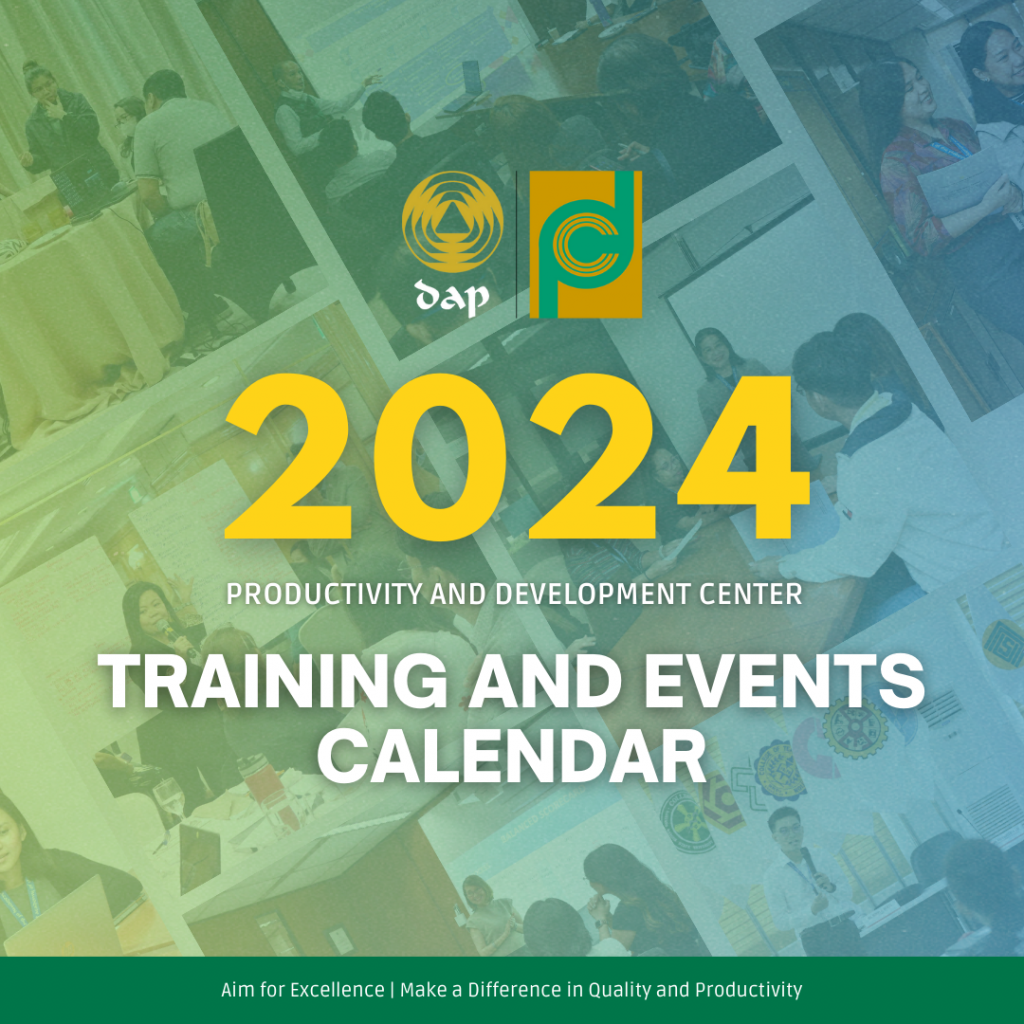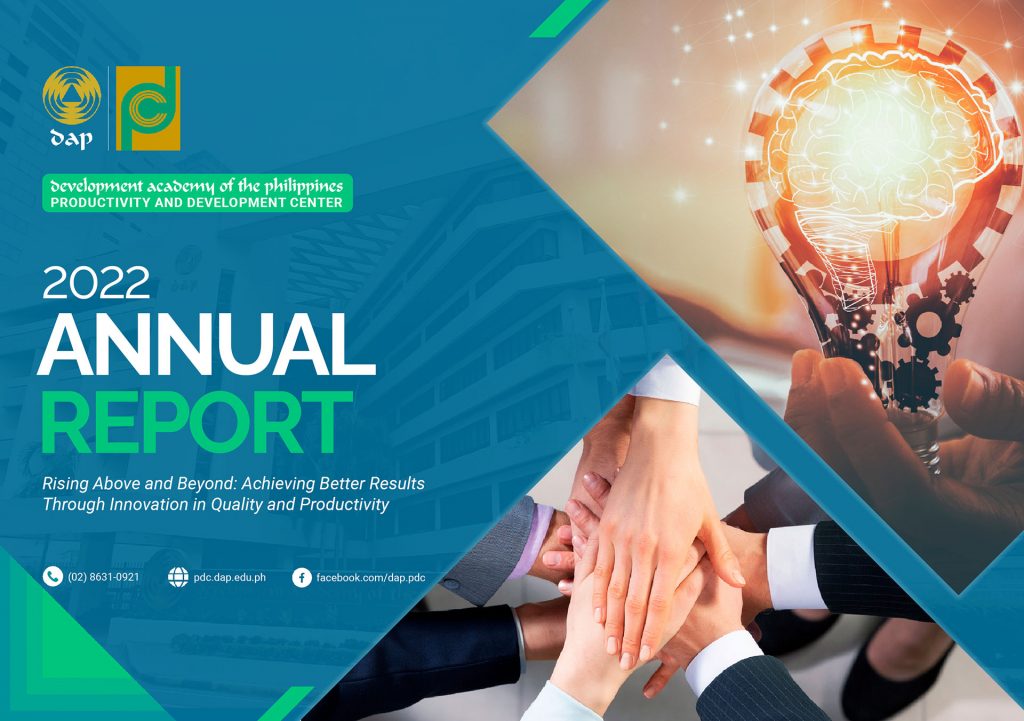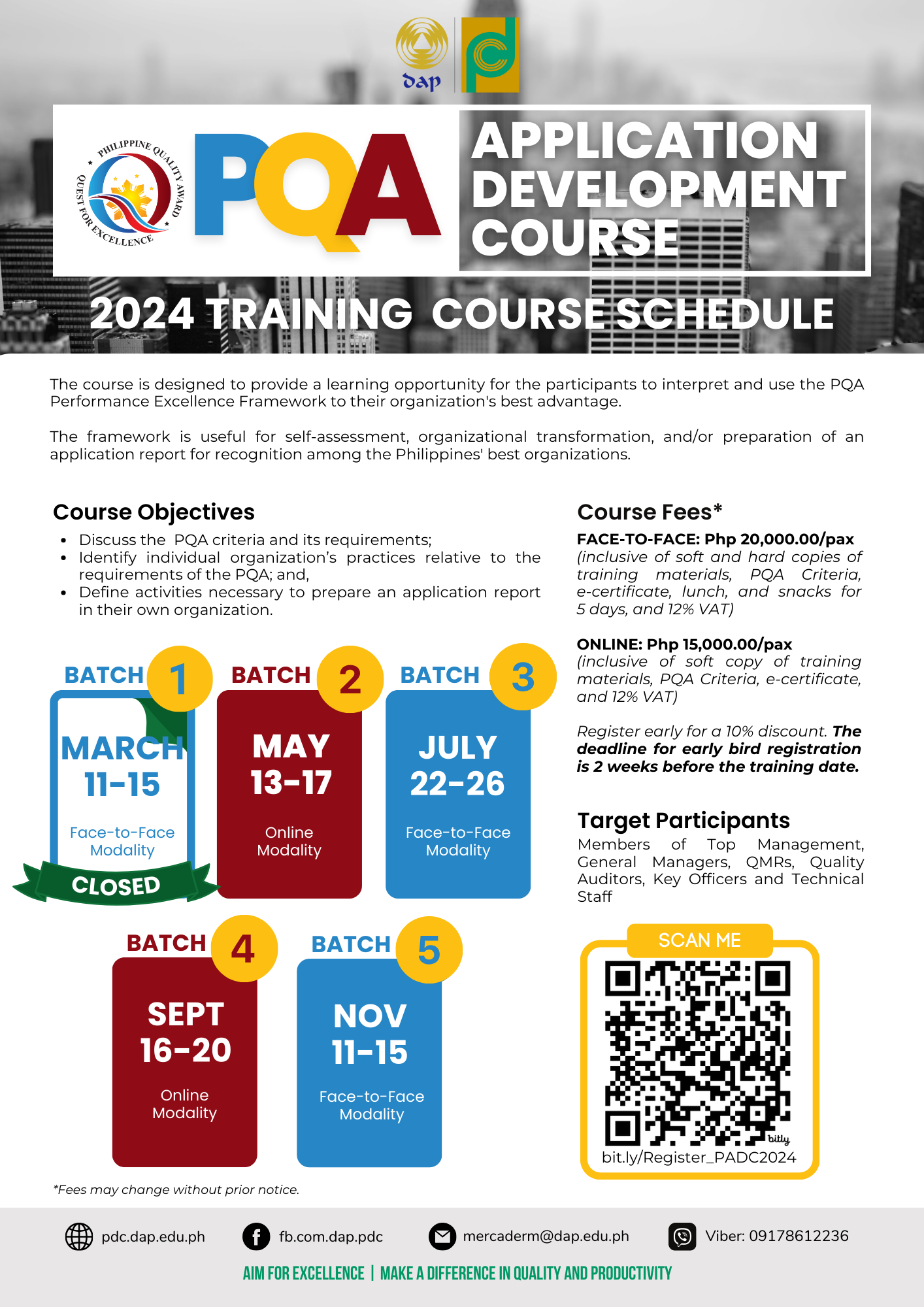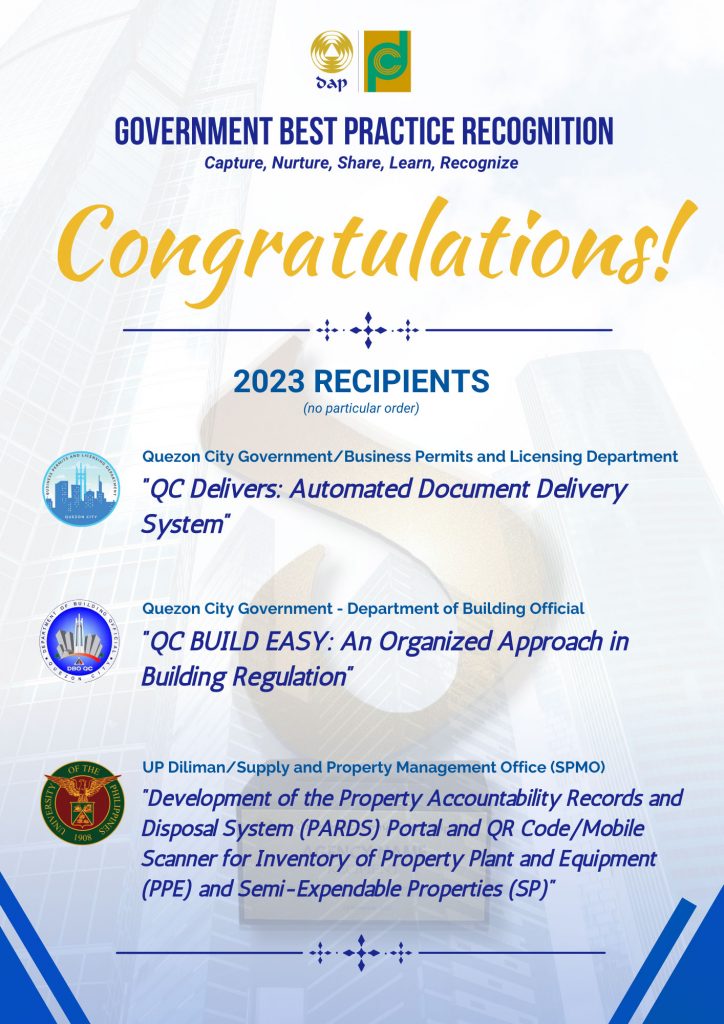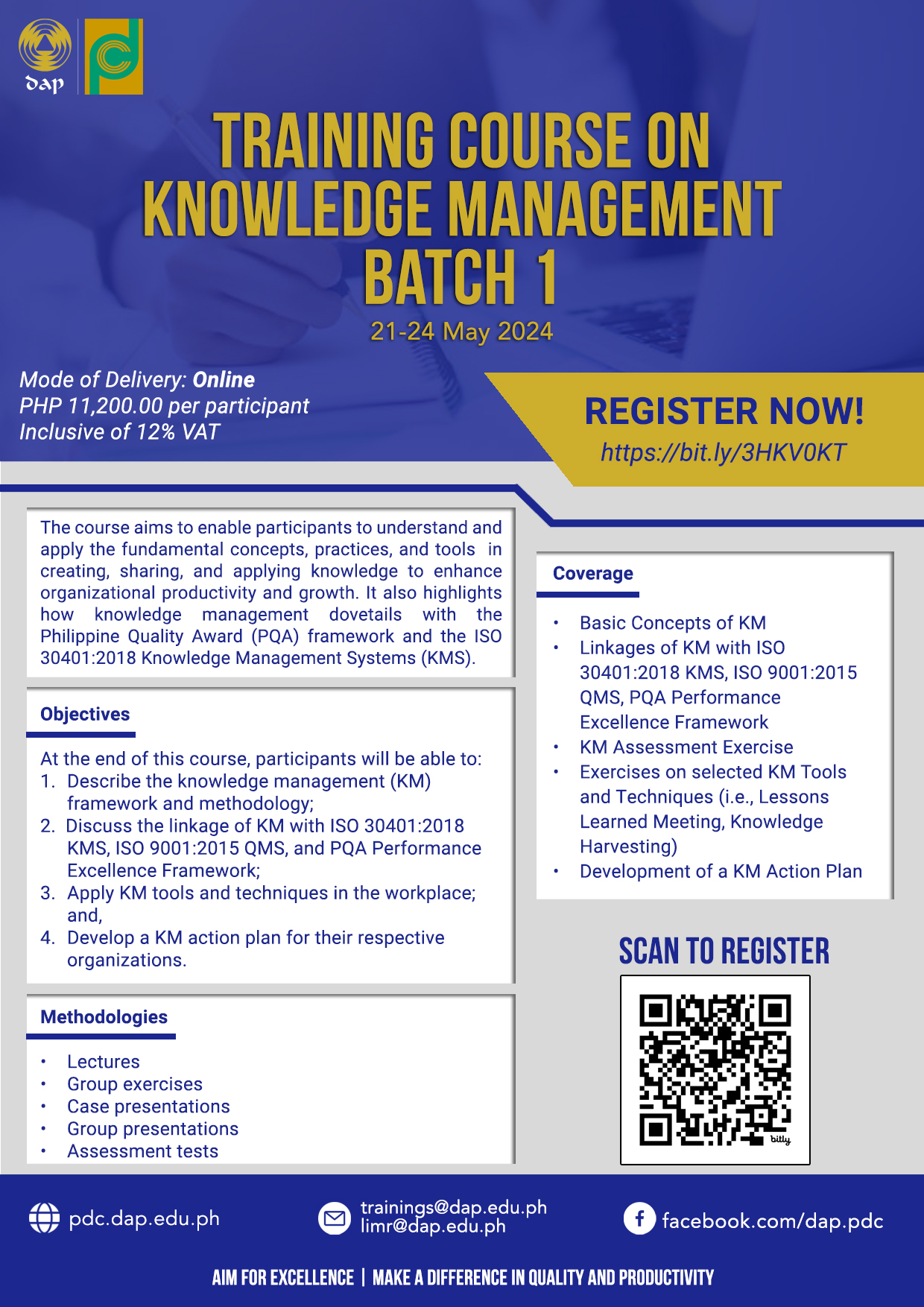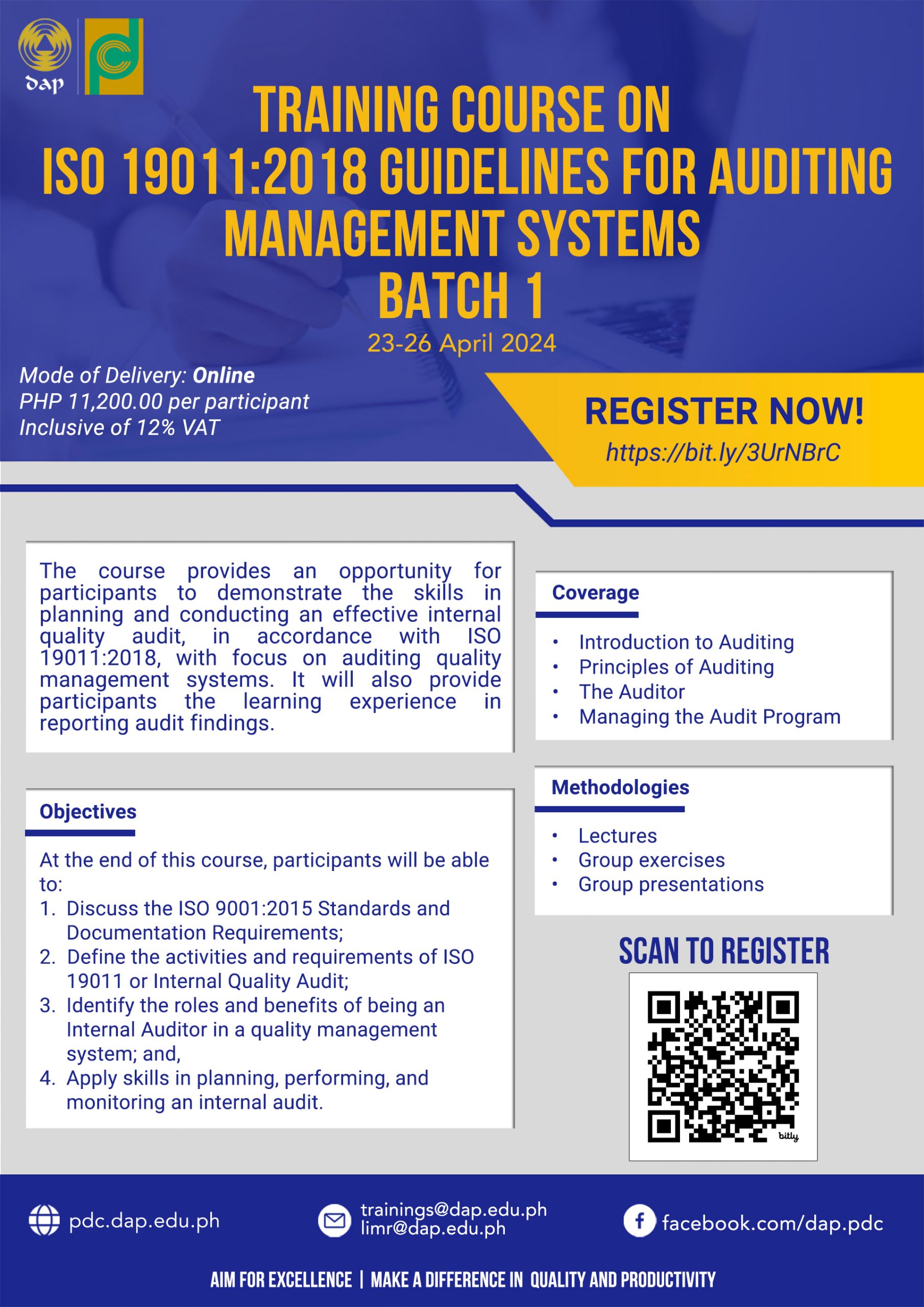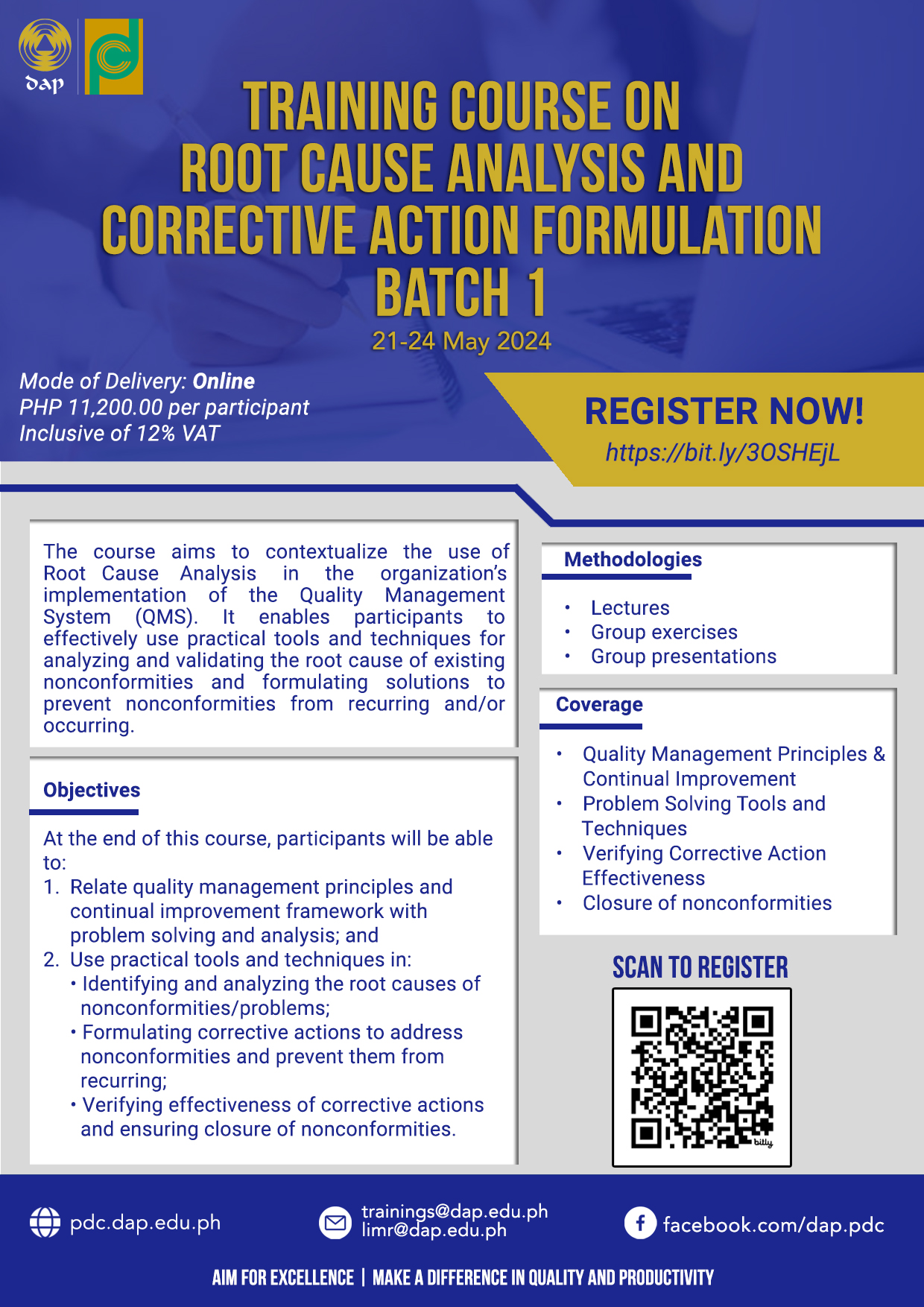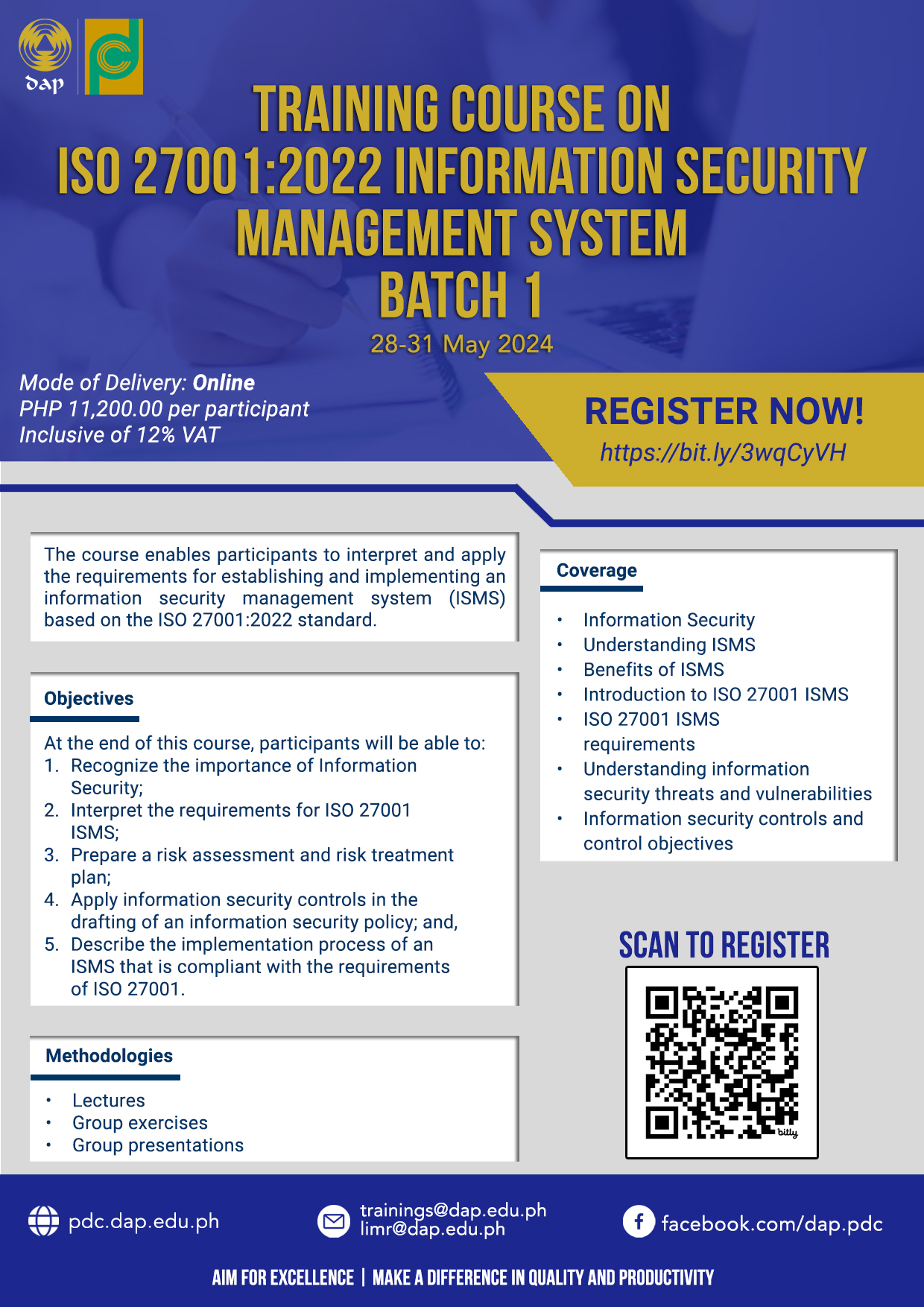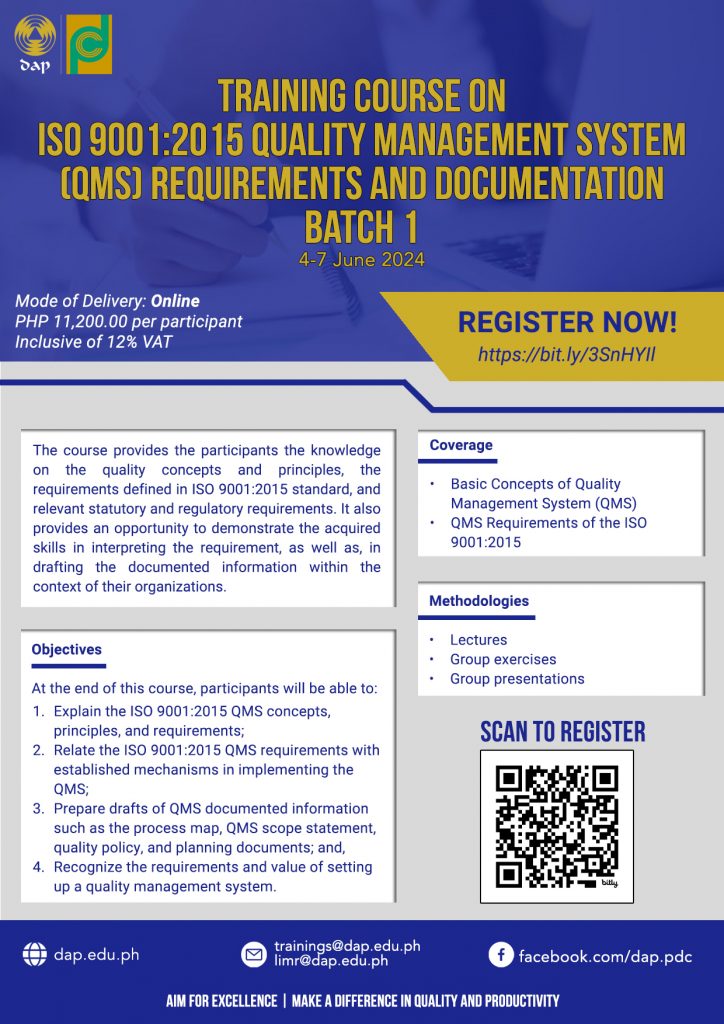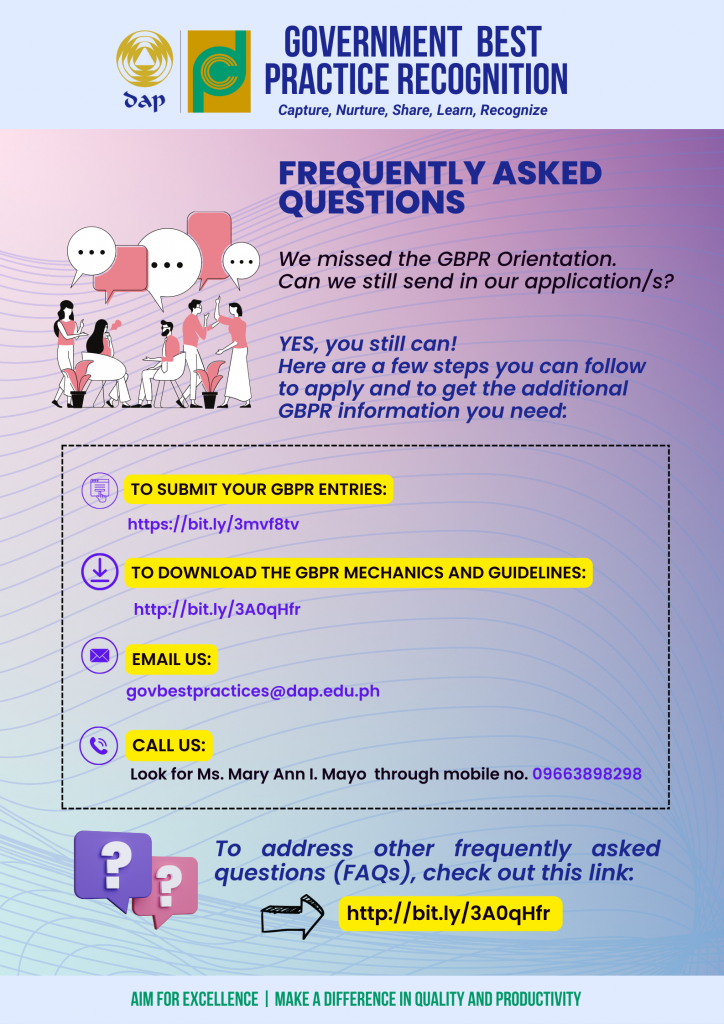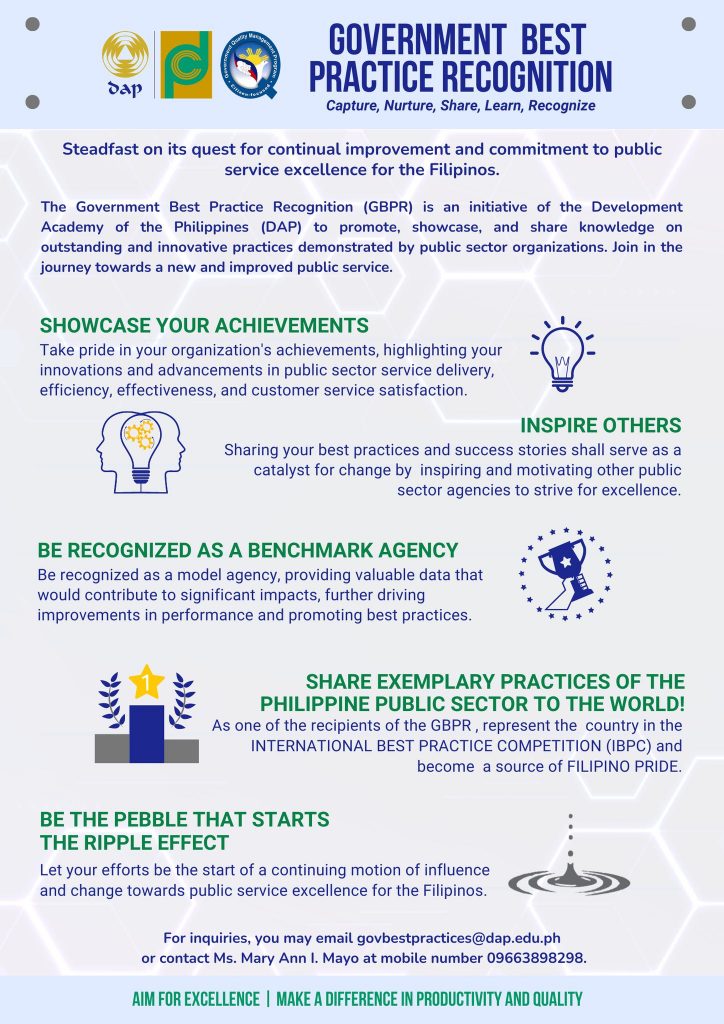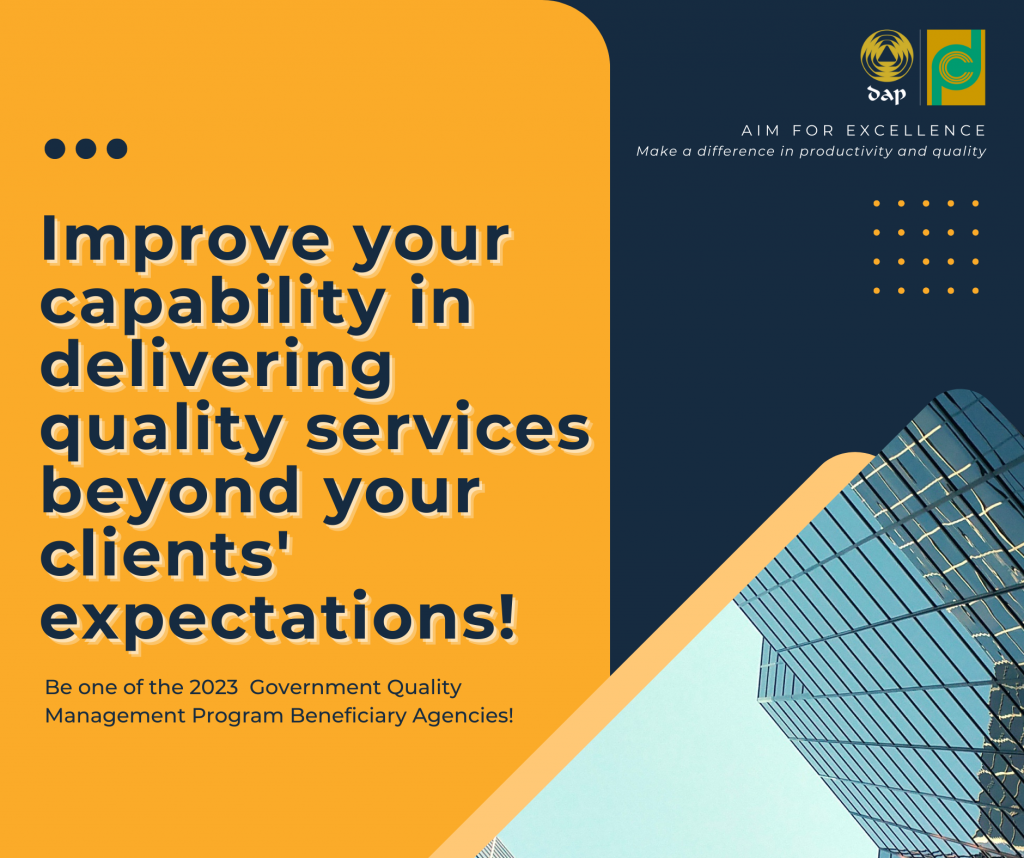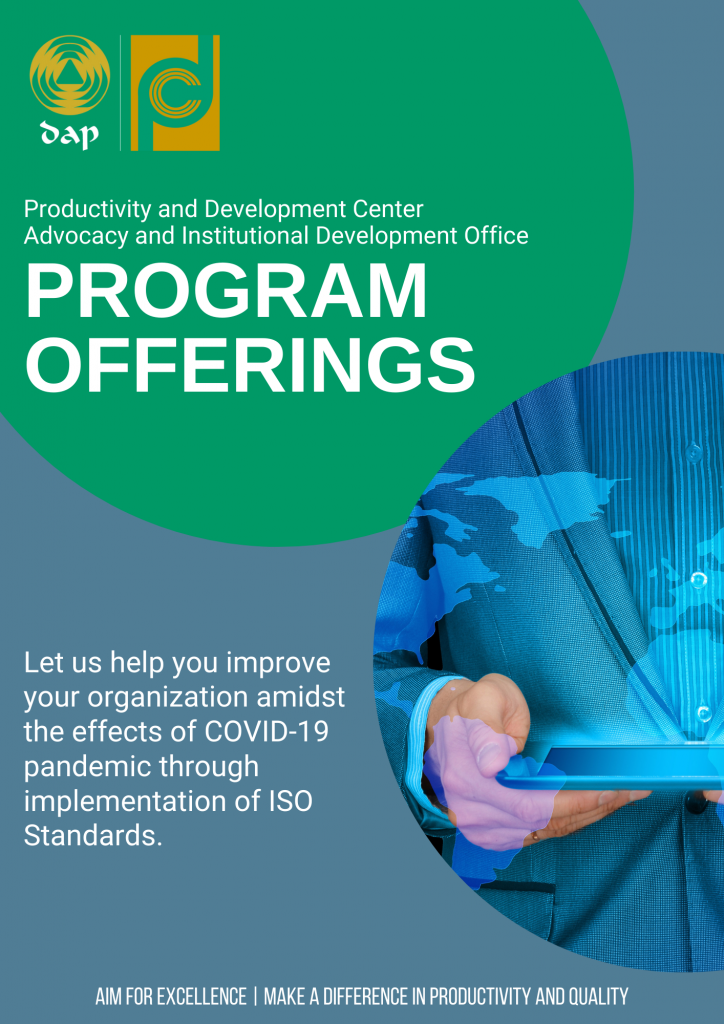Client satisfaction is given prime value by successful organizations involved in providing products or services to the people. The client satisfaction level measures the quality of service delivered by the organization to its clients. Having learned about the results of their clients’ responses on satisfaction level, it is important for organizations to go beyond measuring clients’ perception of their service by determining what their clients expect from them and setting standards to improve the quality of their outputs. For the government, after getting the results of citizens’ satisfaction, the next step is to focus on setting standards that will determine their success or failure in delivering quality services.
Although the government does not compete for clients, it is, however, mandated to serve the public. Thus, it also has to set service quality standards that meet clients’ needs and expectations. In the President’s Penultimate Report to the People (2016-2020), he expressed his administration’s mantra: the Filipinos deserve world-class standards of public service. Across all government institutions, from national agencies to local government units, high quality service is expected from each office for them to achieve their agency mandate and mission. To reach their goals successfully, government offices should actively engage the citizens by collecting their feedback on the quality of services that they render. This outside-in approach, which is commonly known in the government sector as citizen-centered approach, values clients’ voices and understands their needs. In this approach, public responses are used as guides to improve service standards which will help ensure delivery of quality frontline government services.
In an effort to institutionalize service quality standards under the Government Quality Management Program, the Development Academy of the Philippines, through its Productivity and Development Center, conducts nationwide whole-of-government satisfaction surveys to gauge citizens’ and businesses’ ratings of frontline government services. This study is conducted to identify key drivers of satisfaction, service attributes that matter most, and priority areas for improving frontline government service delivery.
In the recent survey, results showed a decline in the citizen satisfaction score of government services, from 86.93 in 2018 to 70.14 in 2020. The said year’s rating was expected, as the study was conducted during the COVID-19 pandemic, with increased demand for frontline services and movement restrictions while providing the needed services.

The 2020 survey also revealed that across government agency clusters, the local government units scored lowest at 53.62, significantly lower than the overall satisfaction score. The national government agencies for the social, welfare, and health services sector recorded the second-lowest score with 67.85, followed by the One-Stop Service Center for OFWs (OSSCO) with 67.90. During the pandemic, these sectors and offices had an influx of clients needing frontline services.
The cluster of civil registration received the highest score of 82.86, followed by economic, employment, and licensing agencies with 73.57. These offices already have established online portals, automated channels, and phone services even prior to the advent of the pandemic. Notably, these non-face-to-face services received the highest satisfaction rating in 2020, with the online method (i.e., websites, apps, emails, and social media) rated at 76.63, higher than the overall score of 70.14.

The results of the survey suggest many areas for enhancing frontline government services. The citizen’s’ satisfaction score results gives an opportunity for government agencies and offices to enhance their service delivery as well as adapt to the changing needs of clients, especially during the ‘new normal.’
Specifically, the survey suggests which agencies need to improve most: the social, welfare, and health sector and the local government. With a decline in the overall score of citizen satisfaction, all other government sectors need to adapt to changes. The survey findings also suggest what to improve in the clients’ method of contact: multiple modes of transaction, which received the lowest rating of 64.24. This underscores the need for streamlining of processes that is important for the citizens. For instance, the satisfaction rating is highest on the online method (i.e., websites, apps, emails, and social media) at 76.63, higher than the overall rating of 70.14, suggesting that these methods need to be maintained and enhanced given the changes in services needs of the people under the new normal.
Declining citizen satisfaction is directly linked to the reduction of public trust and increasing costs associated with ineffective and inefficient government service delivery from the citizen’s perspective. On the other hand, focusing on improving citizen’s’ satisfaction by making transactions easier at a lesser time can increase their willingness to comply with government requirements and improve their trust in the government. Thus, investing in improving services to the citizens is vital to build connections and foster good relationships with the public.
Moreover, organizations that imbibe client-centered approach build cultures that benefit both employees and clients, according to Chris Joseph in his article, “What Are the Benefits of Delivering Excellent Customer Service?” There is a direct relationship between positive client feedback and employee engagement, i.e., positive client satisfaction means employee satisfaction, as well. These dynamics increase productivity, reinforcing positive attributes in the workplace (Ameritas, 2020).
Apart from this positive client-employee’s reinforcement, studies showed that adhering to client service quality standards improve revenue and lessen operational costs. Private industries that invest in improving client services typically achieve cost reductions of 15 to 25 percent within just two or three years and achieved 5 to 10 percent revenue growth for optimizing client experience (Duncan et al., 2016). They did this by identifying what matters most to their clients and investing in them while removing areas and processes that clients do not value.
The government can thus greatly benefit from setting service standards by soliciting citizen’s’ feedback from achieving their set mission, satisfying the public and gaining their trust, engaging employees, reducing operational costs, and improving revenues.

With these myriads of benefits on client orientation, how will the government optimize the benefits of fostering satisfied citizens? Agencies can follow the service quality standards (SQS) journey (see figure above) as a guide for reforming and improving government services. The SQS journey is a procedural cycle that raises appropriate questions and seeks answers to identify areas for improvement, thus setting quality standards that could meet and even exceed citizens’ expectations.
The SQS Journey begins with the question, (1) “Where are we now?” by measuring citizen and business satisfaction; followed by (2) “Where do the citizens and businesses want us to be?” by measuring citizen and business expectations, and identifying priorities based on their responses. After gathering feedback from the transacting public, frontline government agencies and their staff can then ask (3) “How will we get there?” by setting targets and developing service quality improvement plans for their respective agencies, and (4) “How do we make it happen?” by implementing, monitoring, measuring, and ensuring accountability throughout the process.
With the systematic changes during the pandemic, the 2020 citizen satisfaction survey showed that citizen’s’ needs change. The government, as the prime provider of public service, across all sectors and units, will do well if they adapt to these changes to meet citizen’s’ positive feedback. High-quality standards of service should be present in all methods or service channels, with the growing importance of online transactions.
Citizens’ needs and expectations change, and the government has to keep up with these demands using technology and innovation. This can only be done through continuous measurement of client satisfaction and what matters to them, understanding their needs and expectations and effectively addressing them. As Peter Drucker said, “If you can’t measure it, you can’t improve it.”
xxx

